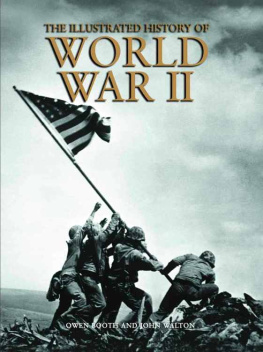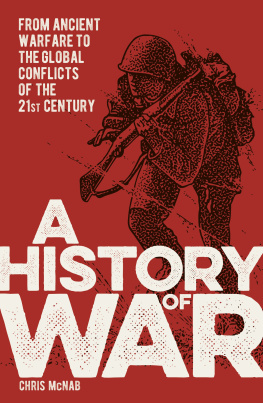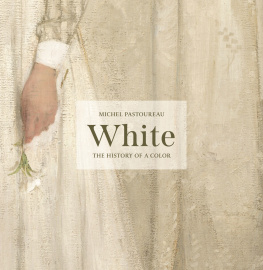THE ILLUSTRATED HISTORY OF
WORLD WAR II
OWEN BOOTH AND JOHN WALTON

This digital edition first published in 2014
Published by
Amber Books Ltd
7477 White Lion Street
London N1 9PF
United Kingdom
Website: www.amberbooks.co.uk
Appstore: itunes.com/apps/amberbooksltd
Facebook: www.facebook.com/amberbooks/
Twitter: @amberbooks
Copyright 2014 Amber Books Ltd
ISBN: 978-1-78274-170-1
All rights reserved. With the exception of quoting brief passages for the purpose of review no part of this publication may be reproduced without prior written permission from the publisher. The information in this book is true and complete to the best of our knowledge.
All recommendations are made without any guarantee on the part of the author or publisher, who also disclaim any liability incurred in connection with the use of this data or specific details.

www.amberbooks.co.uk
Contents
One
THE GATHERING STORM
Two
THE RAPE OF POLAND
Three
THE PHONEY WAR
Four
THE FALL OF FRANCE
Five
BRITAIN STANDS ALONE
Six
THE BALKAN CAMPAIGN
Seven
BARBAROSSA
Eight
PEARL HARBOR
Nine
THE WAR AT SEA
Ten
THE DESERT WAR
Eleven
GERMAN DEFEAT IN THE EAST
Twelve
THE SECOND FRONT
Thirteen
OPERATION OVERLORD
Fourteen
THE FALL OF GERMANY
Fifteen
MIDWAY TO HIROSHIMA
Sixteen
EMPIRE IN CRISIS AUSTRALIA, INDIA AND BURMA
Seventeen
THE FINAL SOLUTION
Eighteen
FROM THE ASHES
Introduction
US SOLDIERS USING FLAME-THROWERS AND
DYNAMITE TO BRING THE JAPANESE OUT OF THEIR COCONUT
LOG PILLBOXES, BOUGAINEVILLE ISLAND, DURING THE
BATTLE OF THE PACIFIC, 1943.
T he Second World War remains the largest military conflict in history. Lasting for over six years, it involved soldiers and civilians from across five continents and resulted in the deaths of nearly fifty million people. It saw the rise and fall of empires and the breaking up of entire nations, the creation of new superpowers, the invention of awesome atomic weapons and attempted genocide on a scale never witnessed before or since.
It was a war fought on land, at sea and in the air, from western Europe to the steppes of Russia, from the deserts of North Africa to the jungles of South-East Asia, and across the Atlantic, Pacific and Indian oceans. It was a war fought to defend democracy, in which the territorial ambitions of Nazi Germany, Fascist Italy and Imperial Japan were opposed by a grand and unlikely alliance between the USA, Soviet Russia and the British Empire. It was a war that witnessed countless moments of incredible bravery and sacrifice alongside those of unspeakable cruelty and terror.
Most of all it was a war fought by millions of ordinary people, as entire nations were mobilised in a global life-or-death struggle. While enlisted men in huge mechanised armies endured terrible conditions at the front, people at home poured into the factories or risked their lives at sea transporting vital supplies to support the war effort. At the same time, the introduction of massive aerial bombing campaigns against towns and cities on both sides put civilians in the front line in a way that no war had ever done before. And in numerous occupied nations, resistance movements made up of people from all walks of life endured the appalling consequences of their refusal to surrender to the enemy.
For six years the world was engulfed by a single conflict. This book seeks to tell the story of those years.
CHAPTER 1
The
Gathering Storm
IMMEDIATELY AFTER TAKING POWER HITLER SET ABOUT
REBUILDING GERMANYS WAR MACHINE WITH THE AIM OF OVER
TURNING THE GERMAN DEFEAT IN THE FIRST WORLD WAR.
HITLER WAS DETERMINED THAT GERMANY WOULD NOT BE ON
THE LOSING SIDE A SECOND TIME.
SURRENDER AT MUNICH
T he storm clouds of war seemed to be gathering over Europe when the British Prime Minister, Neville Chamberlain, returned from Munich on 30 September 1938, after completing tense diplomatic negotiations with the dictator of Nazi Germany, Adolf Hitler.
Chamberlains quest had been peace, but the British public were so fearful of failure that there had been a run on the gas masks already pouring off the production lines. Fear of gas attack, inspired by its use in the First World War of 191418, was a potent one, but then so was fear of German air raids.
HITLER TAKES CENTRE STAGE AT ONE OF THE NAZI PARTYS FAMOUS NUREMBERG RALLIES. HELD EVERY YEAR, THE RALLIES WERE THE FOCAL POINT OF THE NAZI POLITICAL CALENDAR. THE PARTY FAITHFUL AND THOUSANDS OF ORDINARY GERMANS WOULD FLOCK TO NUREMBERG EACH YEAR TO HEAR THEIR FUHRERS SPECTACULAR AND MESMERISING SET PIECE SPEECHES.
An air raid warning system was prepared in case German bombers attempted to attack British cities, and plans were laid for the evacuation of children from the major towns to the safety of the countryside. Half a million men and women, in a mood of defiance and trepidation, volunteered to serve in the ARP Air Raid Precautions. The catchphrase of the time was the bombers will always get through, and both civilians and the military believed it. So did former prime minister Stanley Baldwin, whom Chamberlain had replaced in 1937.
Chamberlain had not hidden the grim nature of the crisis from the public. Before he left for Munich, he broadcast on BBC radio, and told listeners: How horrible, how fantastic, how incredible it is that we should be digging trenches and trying on gas masks here because of a quarrel in a faraway country between people of whom we know nothing.
The people of whom we know nothing were the Czechs, whose republic had been creaed only 20 years before, after the end of the First World War in 1918, and the Germans, the enemy defeated the same year by Britain, France and their allies. The quarrel concerned the Sudetenland, which was part of Czechoslovakia, but was claimed by Hitler on the grounds that its mainly German-speaking population was, he said, being persecuted.
On his return, Chamberlain emerged slowly from his plane to tell reporters waiting at Heston aerodrome that his negotiations with Hitler had been successful. Britain and Germany, he said, had agreed never to go to war with one another again. This, the Prime Minister claimed, was peace for our time and peace with honour, not only for Britain but for the whole of Europe.
Overnight, it seemed, tension drained away. The relief was overwhelming, the reaction ecstatic. Chamberlains face-saving deal with Hitler had saved Europe from a second war within a generation.
But not everyone was convinced. Some MPs denounced the Munich agreement as a sell-out to Hitler. The French Prime Minister, Edouard Daladier, who had been with Chamberlain at Munich, surveyed the wildly cheering crowds that greeted his return to Paris and remarked: Bloody fools! These sceptics already realised the truth behind the Munich Agreement.












